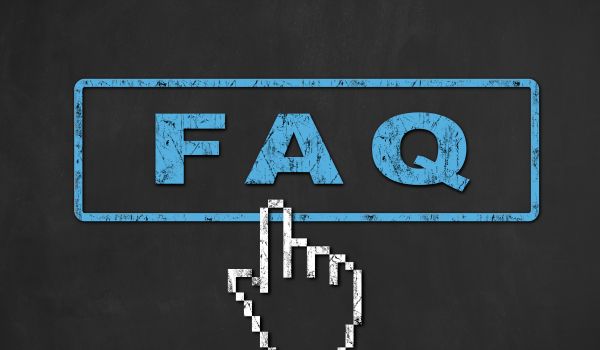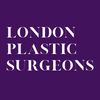Your Guide to a Quick Recovery after a Tummy Tuck
A tummy tuck is a cosmetic surgical procedure aimed at improving the appearance of the abdominal region. The recovery process plays a crucial role in determining the success and overall satisfaction of your tummy tuck surgery. Ensuring proper healing and minimising complications are key factors in achieving the desired aesthetic results. Following your surgeon’s post-operative care instructions, maintaining a healthy lifestyle, and practicing patience throughout the recovery journey are essential components of a successful healing process. Taking the time to adhere to the prescribed guidelines will not only help prevent potential risks but also contribute to the long-lasting, transformative effects of your tummy tuck.
London Plastic Surgeon Mr Mark Gittos is committed to helping patients achieve the best possible results after body contouring surgery.
Download Mr Mark Gittos’ Guide to Tummy Tuck Surgery – Abdominoplasty

What to Expect Immediately After Surgery
After a tummy tuck surgery, you can expect to experience some discomfort and pain. You may also experience swelling, bruising, and some drainage from the incision site. You will be closely monitored by medical staff in a recovery room for several hours after the surgery.
Following this initial monitoring period, you will be sent home to continue your recovery. During the first few days after the surgery, you should expect to feel sore and may need to take pain medication to manage your discomfort. Swelling and bruising are also common during this time, and you may find it difficult to move around comfortably.
In addition to managing pain and swelling, you should also be careful to follow any restrictions on activities or movements that your surgeon has prescribed. For example, you may need to avoid strenuous activities, lifting heavy objects, or bending over for several weeks after the surgery. It is also important to keep the incision site clean and dry to prevent infection.
Overall, the immediate recovery period after a tummy tuck surgery can be challenging, but most patients find that their discomfort and symptoms gradually improve over the course of several days. It is important to closely follow your surgeon’s instructions and to reach out to your medical team if you experience any concerning symptoms or complications.
Post-Operative Instructions
After a tummy tuck surgery, following post-operative instructions is crucial for a smooth recovery. Here are some key instructions that patients should follow:
· Following surgeon’s recommendation
It is important to carefully follow your surgeon’s guidance during the recovery period. Your surgeon may give you specific instructions on things like wound care, pain management, and activity restrictions. It is also important to attend any follow-up appointments with your surgeon to monitor your progress and ensure that your recovery is going well.
· Wound care
Proper wound care is essential to prevent infection and promote healing after surgery. Your surgeon will provide specific instructions on how to care for your incisions, including when and how to clean them, how to change dressings, and when to contact your surgeon if you notice any signs of infection.
· Pain management
Pain management is an important part of recovery after a tummy tuck surgery. Your surgeon will prescribe medication to help manage your discomfort during the initial recovery period. It is important to take your medication as your surgeon recommended and to reach out to your surgeon if your pain is not well-controlled.
· Activity restrictions
Following activity restrictions is crucial during the recovery period to prevent complications and promote healing. Your surgeon may provide specific instructions on things like when you can return to work, when you can resume exercise or other physical activities, and when you can lift heavy objects. It is important to follow these restrictions closely to avoid putting stress on your incisions and to allow your body to heal properly.
Realistic Expectations for Tummy Tuck Recovery

It is important to set realistic expectations for recovery after a tummy tuck surgery. The timeframe for recovery after a tummy tuck surgery can vary from patient to patient, and can depend on a number of factors, including the complexity of the surgery and the patient’s overall health condition. A general timeline for the recovery process after a tummy tuck may look like this:
First few days after surgery: During the first few days after surgery, you might experience discomfort, swelling, and bruising around the incision site. This is normal and usually easily manageable with pain medication. The recommendation is to limit physical activity and follow specific instructions for wound care
First week after surgery: During the first week after surgery, you will begin to see some improvement in your symptoms. Swelling and bruising may start to decrease, and you will be able to start moving around more comfortably. However, it is important to continue following any activity restrictions and to closely monitor the incision site for any signs of infection or complications
Second week after surgery: By the second week after surgery, many patients are able to return to work or resume light activities, but it is important to still avoid any strenuous exercise or heavy lifting
Weeks 3-6 after surgery: During the next several weeks after surgery, you will see improvements in the overall appearance. You will be able to gradually resume all normal activities, including exercise and other physical activity
Months 3-6 after surgery: By this time, you should be fully healed from your tummy tuck surgery, and able to fully resume all normal activities. The incision site should be fully healed, and you should see a significant improvement in the appearance of your abdomen
Rest and Sleep during Recovery after Abdominoplasty
Rest is crucial during the recovery process after a tummy tuck surgery. Your body needs time to heal, and rest allows your body to focus its energy on healing the incision site and reducing inflammation. It is important to avoid strenuous activities and to give your body the time it needs to recover fully.
Proper sleeping positions are important during the recovery process. It is important to avoid sleeping on your stomach or on your side during the initial recovery period, as this can put pressure on the incision site and interfere with the healing process. Your surgeon may recommend sleeping on your back with your upper body slightly elevated to reduce swelling and promote healing.
Compression Garments after Tummy Tuck
Compression garments are designed to help reduce swelling and inflammation after a tummy tuck surgery. These garments apply pressure to the treated area, which can help improve blood flow and prevent fluid build-up. Wearing a compression garment can also help support the abdominal muscles as they heal, which can reduce discomfort and promote healing.
The duration of use for a compression garment can vary, but, most of the times, patients will need to wear the garment for several weeks or even months after the surgery. Your surgeon will provide specific instructions on how long to wear the garment and when it can be removed.
Proper use of a compression garment is important to ensure its effectiveness and to promote healing after a tummy tuck surgery. Here are some tips for proper use:
- Make sure the garment fits properly and is not too tight or too loose
- Wear the garment consistently, only removing it when instructed by your surgeon
- Keep the garment clean and dry to prevent infection
- If you experience any discomfort or irritation from the garment, contact your surgeon for guidance
Diet during Tummy Tuck Recovery
Maintaining a healthy diet is an important part of the recovery process after a tummy tuck surgery. Eating a healthy diet during recovery can support your body’s natural healing processes. A diet that is rich in nutrients can help reduce inflammation, boost immune function, and provide the energy your body needs to heal.
Some foods that are particularly beneficial during the recovery process include:
- Lean protein such as chicken and fish can help promote healing and provide energy
- Fruits and vegetables, which are rich in antioxidants and other nutrients that can help reduce inflammation and support healing
- Whole grains, which provide energy and fibre to support digestion and bowel regularity
- Healthy fats such as nuts and seeds can help reduce inflammation and support overall health
Staying hydrated is also important during the recovery process. Drinking plenty of water and other fluids can help promote healing and reduce the risk of complications, such as constipation. It is important to avoid sugary or caffeinated beverages, as these can actually dehydrate the body and interfere with the healing process.
FAQs about Recovery after Tummy Tuck

How long will I need to wear a compression garment after my tummy tuck surgery?
- The duration of time that you will need to wear a compression garment after your tummy tuck surgery will depend on a number of factors, including the complexity of your surgery and how well you are healing. In general, most patients will need to wear a compression garment for at least several weeks after the surgery to help reduce swelling and inflammation and promote healing. Your surgeon will provide specific instructions on when to wear the garment and for how long. Some patients may need to wear the garment continuously for several weeks after the surgery, while others may only need to wear it during the day for a shorter period of time. The duration of use can also depend on how well you are healing and how quickly your swelling and inflammation subside.
When can I resume normal activities after my tummy tuck surgery?
- In general, you should avoid strenuous activities and follow any activity restrictions prescribed by your surgeon during the initial recovery period. During the first few days after your surgery, you will likely experience discomfort, swelling, and bruising around the incision site. During this time, it is important to rest and avoid any activities that may put stress on the incision site, such as bending, lifting, or twisting. After the first week or two of recovery, you may be able to gradually resume light activities, such as walking or gentle stretching. However, you should still avoid any intense activities, including exercise or heavy lifting, until you have fully healed.
Will I experience pain after my tummy tuck surgery?
- It is common to experience some discomfort and pain after a tummy tuck surgery. You will get a prescription for pain medication from your surgeon. Taking pain medication on time as per your surgeon’s instructions is essential during the initial recovery stages.
When can I return to work after my tummy tuck surgery?
- In most cases, patients may be able to return to work or resume light activities after the first week or two after the surgery. The type of work that you do can influence the need for time off. For example, if your job is physically demanding, your plastic surgeon might advise you to take more time off.
Will I see my final results immediately after my tummy tuck surgery?
- No, you will not see your final results immediately after your tummy tuck surgery. It is important to understand that the recovery process after a tummy tuck surgery can take several weeks or even months, and it is important to be patient and give your body the time it needs to heal fully. It may take several weeks or even months to see your final results.
Further Reading about Body Contouring Procedures with Mr Mark Gittos
- Read Mr Mark Gittos’ Liposuction Surgery Page
- Read Mr Mark Gittos’ Tummy Tuck Surgery Page
- Read Mr Mark Gittos’ Mummy Makeover Surgery Page
- Read Mr Mark Gittos’ Blog about Using Silicone Strips to reduce your cosmetic surgery scars
- Read Mr Mark Gittos’ Blog about Should I Give up Smoking Before Cosmetic Surgery?
Medical References about Tummy Tuck
- Tummy Tuck Surgery (Abdominoplasty) – WebMD
- Tummy Tuck: Plastic Surgery – Cleveland Clinic
- Tummy tuck – Mayo Clinic
- Abdominoplasty – NCBI
About Mr Mark Gittos FRACS (Plast) – London Plastic Surgeons
Practice locations in London & Essex, UK and Auckland, New Zealand.
Mr Mark Gittos offers high quality, natural-looking cosmetic surgery results and is highly experienced in Breast, Body and Face Surgery having performed over 4000 Surgeries in the last 26 years.
With world-wide expertise Mr Gittos is an expert in breast, face and body surgery for men & women.
Mr Mark Gittos is a leading Specialist Plastic Surgeon and operates a practice in London UK and Auckland New Zealand. His practice focuses on both surgical and non-surgical procedures, each designed to help restore, improve or change a physical characteristic or problem. The first step in every case is to talk through your personal requirements and explore all the options, before deciding on the most effective solution.
Naturally, before any treatment is begun, we will explain clearly the advantages and risk factors; so that you have the information you need to make an informed decision that is best for you. Visit the practice to find out more.

NEXT STEPS
Do your Research
- Read the Website and Blogs relevant to your procedure
- Browse our Frequently Asked Questions including how to choose a Surgeon for your procedure
- Download the Guides to Surgery
What to Bring to your Plastic Surgeon Consultation
- Bring a friend or relative to help discuss the information and your choices
- Take lots of notes and read the documents provided thoroughly
- Want more information before scheduling your consultation?
Book your Initial Surgery Consultation
- A Referral from your GP or specialist is helpful but NOT essential – you can have a consultation without a GP Referral
- Email us or Call in London on 07557 858156 to arrange your surgeon consultation appointment.
- Book a consultation with Mr Gittos by paying the Consultation Fee
Please contact us to arrange to book a consultation with our Specialist Plastic Surgeon or to speak with our Patient Care Advisor.
Send an enquiry form today or UK phone 07557 858156 during Clinic Hours
